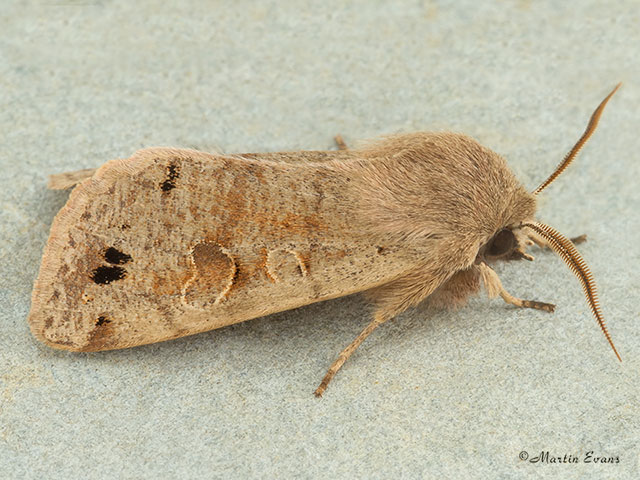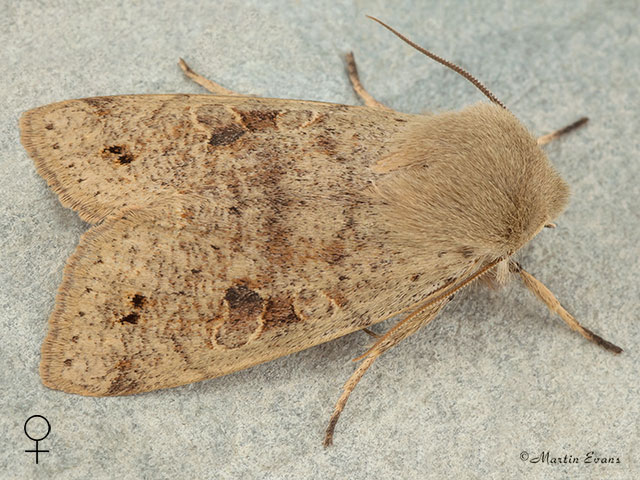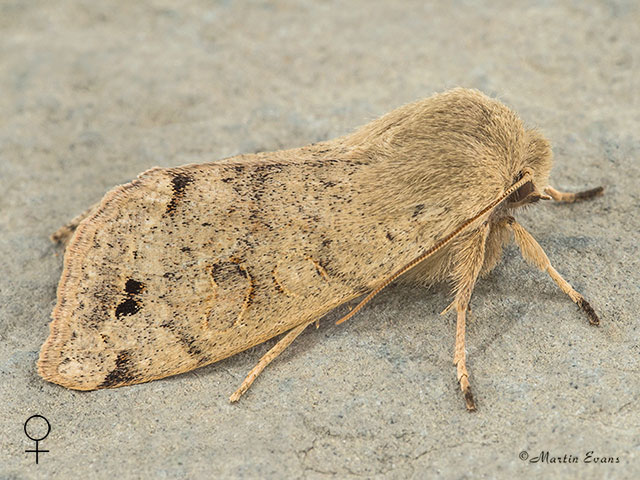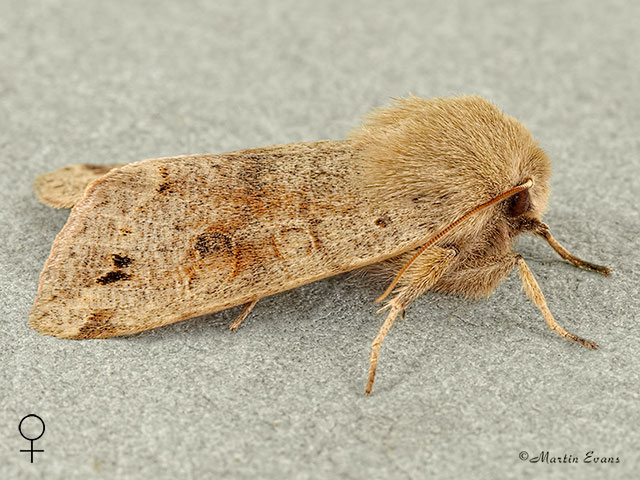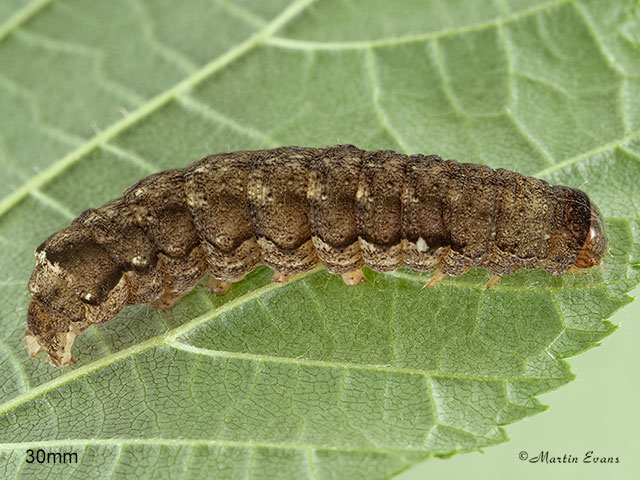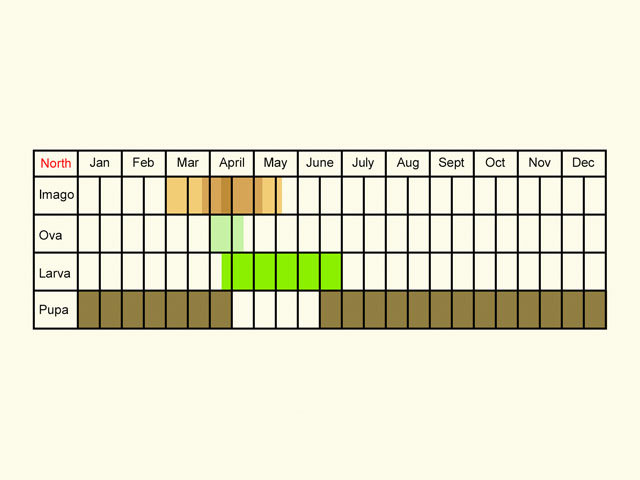Noctuidae
73.250 Twin-spotted Quaker Anorthoa munda ([Denis & Schiffermüller], 1775)
Common
Similar species: The pale forms of Clouded Drab Orthosia incerta lack the twin spots on the outer edge of the forewing and the visibly feathered antennae of the male.
Forewing: 17 to 20mm
Habitats: Deciduous woodland and gardens in wooded areas.
Habits: The moth visits sallow blossom and comes to sugar and light.
Foodplant: The nocturnal larva feeds on oaks, sallows, birches, elms, Sweet Chestnut, Field Maple, Ash, Blackthorn, Aspen, other poplars, Honeysuckle, Hop and other shrubs, deciduous trees and herbaceous plants. It hides amongst the leaves during the day. When larger it hides in crevices in the bark. It pupates in a cocoon under the soil, resting inside the pupal case as a fully formed adult until it emerges in the spring.
On the European mainland it has also been recorded feeding on Beech, Hornbeam, limes and cherries.
